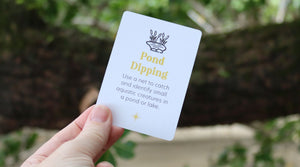Why Build a Slingshot?
Crafting a slingshot is a hands-on way to learn about physics and the world around us. By understanding the science behind how a slingshot works, kids can grasp important concepts like force, motion, and energy, all while enjoying time outdoors.
Finding the Right Materials
Before you start building, you’ll need to gather a few materials. Here’s what to look for:
- A Y-shaped branch: Look for a sturdy branch with a natural “Y” shape. It should be about the thickness of your thumb—strong enough to handle the tension but not too heavy to hold.
- Rubber bands: Two strong rubber bands will form the power of your slingshot.
- A small piece of cloth or leather: This will be the pocket to hold your “ammo.”
- Scissors: You may need these to trim the rubber bands or cloth.
Step-by-Step Slingshot Construction
- Choose and Prepare Your Branch Find a suitable Y-shaped branch from a tree. Ensure the branch is dry and firm, not brittle. You can smooth out any rough spots with a piece of sandpaper if needed.
- Attach the Rubber Bands Take one rubber band and securely tie one end around one arm of the “Y.” Stretch the other end of the rubber band across to the opposite arm of the “Y” and tie it there. Repeat this with the second rubber band on the other side, ensuring both are equally tight and aligned.
- Create the Ammo Pocket Cut your piece of cloth or leather into a small rectangle, about the size of a playing card. Cut small slits on either side and thread the ends of the rubber bands through these slits, then tie them securely. This pocket will hold your ammo.
- Test Your Slingshot Before using your slingshot, make sure all the parts are secure. Find an open area, place a small pebble or acorn in the pocket, pull back, aim, and release. Remember to always aim away from people, animals, and breakable objects.
The Science Behind the Fun: Force and Motion
When you pull back the rubber band, you store energy in the slingshot—this is known as potential energy. When you release the rubber band, that stored energy becomes kinetic energy, which propels your ammo forward. This simple action demonstrates the concepts of force (the pull of the rubber band) and motion (the movement of the object).
Safety First
- Wear safety goggles: Protect your eyes whenever you use your slingshot.
- Be mindful of your surroundings: Only use your slingshot in open areas, far away from people, animals, and property.
- Handle with care: Slingshots are not toys; they should be used responsibly and under adult supervision.
Fun Fact
Did you know? Slingshots have been used for centuries, not just for fun, but also for hunting and even in some sports. They’re a great example of how simple tools can harness the power of physics!
Wrapping Up Your Adventure
Building a slingshot is a rewarding way to spend time outdoors, combining creativity, craftsmanship, and science. By understanding how your slingshot works, you’re not just having fun—you’re also learning valuable lessons about the forces that shape our world. So get out there, build your slingshot, and explore the wonders of physics in action.



